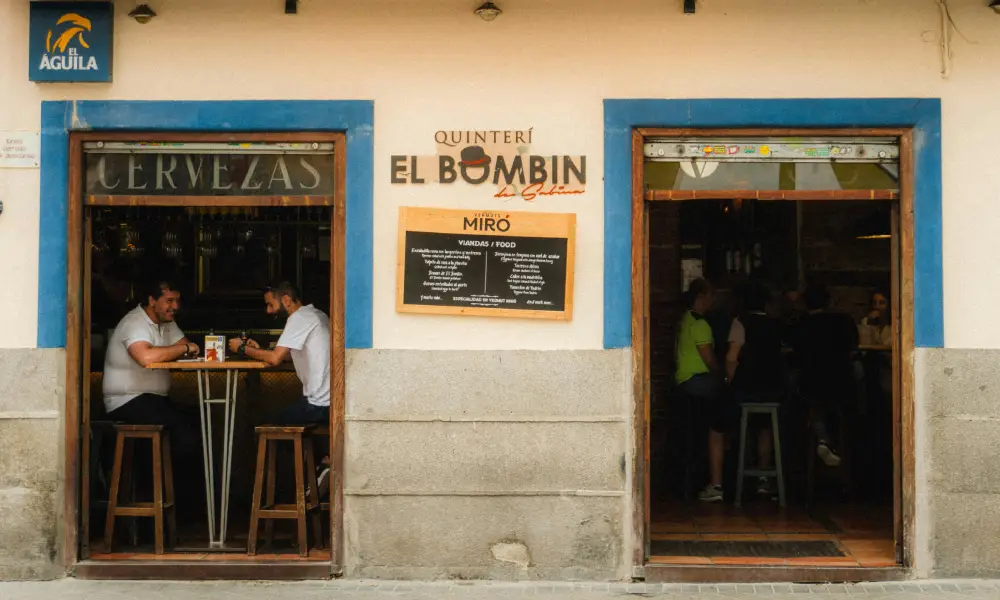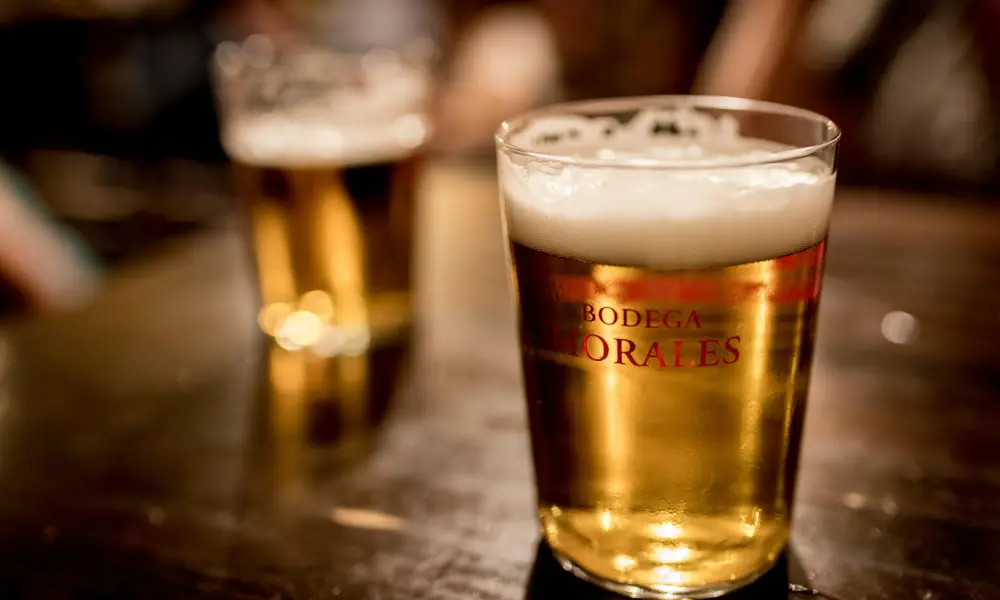What do you call someone from Spain? The primary terms are “Spanish” (both adjective and noun) or “Spaniard” (noun only), but understanding Spanish identity requires appreciating the country’s rich regional diversity where many people identify strongly with autonomous communities like Catalonia, the Basque Country, or Andalusia alongside their Spanish nationality. This complexity reflects Spain’s federal structure and cultural richness that makes the Spanish lifestyle so appealing to international visitors and residents.
Spanish identity encompasses both national unity and regional diversity, creating a sophisticated cultural framework where people often maintain multiple levels of belonging—local, regional, and national—that coexist harmoniously while contributing to Spain’s vibrant cultural landscape and strong community connections.
Primary National Terms
Understanding the basic terminology for Spanish nationality provides the foundation for respectful communication while navigating Spain’s cultural and social environments successfully.
Spanish: The Universal Term
Spanish functions as both adjective and noun, making it the most versatile and commonly used term. You can say “She is Spanish” (adjective) or “He is a Spanish person” (noun), and this usage works appropriately in all contexts from casual conversation to formal documentation.
The term “Spanish” derives from “España” (Spain in Spanish) and represents the safest, most universally accepted way to refer to people from Spain. Native Spanish speakers use “español” (masculine) or “española” (feminine), which translates directly to “Spanish” in English.
Using “Spanish” demonstrates cultural awareness while avoiding potential complications or sensitivities that might arise with other terminology or regional distinctions that require deeper cultural understanding to navigate appropriately.
Spaniard: Traditional but Formal
Spaniard serves exclusively as a noun referring to a person from Spain. While grammatically correct and historically established, it carries more formal or literary connotations and appears less frequently in everyday conversation compared to “Spanish.”
You might encounter “Spaniard” more often in historical texts, academic writing, news reports, or formal documentation rather than casual social conversation. Some people consider it slightly old-fashioned, though it remains perfectly acceptable and respectful.
The term “Spaniard” parallels other nationality terms like “Briton” or “Dane”—technically correct but less commonly used in everyday speech than the corresponding adjective forms.
Regional Identity Complexity
Spain’s autonomous community system creates strong regional identities that coexist with national Spanish identity, resulting in cultural complexity that enriches Spanish society while requiring cultural sensitivity from visitors and new residents.
Understanding Dual Identity
Many Spanish citizens identify simultaneously with their region and nation, seeing these identities as complementary rather than competing. A person might describe themselves as “Catalan and Spanish” or “Basque and Spanish,” reflecting multiple layers of cultural belonging.
This dual identity system reflects Spain’s federal structure where autonomous communities maintain significant self-governance, cultural institutions, and linguistic rights while participating in broader Spanish national frameworks and international representation.
Regional identity often relates to language, cultural traditions, historical experiences, and local governance that create distinct community characteristics within the broader Spanish national context.
Major Regional Identities
Spain’s most prominent regional identities reflect centuries of distinct cultural development, languages, and traditions that contribute to the country’s remarkable diversity and cultural richness.
Catalonia: Catalans
Catalans come from Catalonia, the northeastern region including Barcelona, Girona, Lleida, and Tarragona. Catalan culture centers around the Catalan language, distinct from Spanish, along with unique traditions, institutions, and cultural expressions.
The Government of Catalonia actively promotes Catalan language and culture while maintaining integration within Spanish national frameworks. Many Catalans feel equally Catalan and Spanish, though some emphasize regional identity more strongly.
Understanding Catalan identity helps visitors and residents appreciate Barcelona’s bilingual environment and cultural distinctiveness that sets it apart from other Spanish regions while maintaining connections to broader Spanish culture.
Basque Country: Basques
Basques inhabit the Basque Country (Euskadi), including the provinces of Álava, Gipuzkoa, and Bizkaia, with major cities like Bilbao, San Sebastián, and Vitoria-Gasteiz. Basque identity revolves around Euskera, the Basque language unrelated to any other known language.
Basque culture maintains incredibly strong traditions including pelota sports, distinctive architecture, world-renowned cuisine, and cultural practices that date back millennia. The Basque Government preserves these traditions while fostering economic development and cultural exchange.
Basque identity often emphasizes cultural uniqueness and historical continuity, making it one of Spain’s most distinctive regional identities while maintaining productive relationships within Spanish national structures.
Galicia: Galicians
Galicians live in northwestern Spain’s Galicia region, including A Coruña, Lugo, Ourense, and Pontevedra. Galician culture blends Celtic influences with Spanish traditions, reflected in music, folklore, and the Galician language closely related to Portuguese.
Galician identity emphasizes Atlantic connections, Celtic heritage, agricultural traditions, and distinctive cultural expressions that differ markedly from Mediterranean Spain while maintaining proud Spanish national identity.
The region’s misty landscapes, ancient traditions, and seafaring heritage create cultural atmospheres that feel distinctly different from other Spanish regions while contributing to national cultural diversity.
Andalusia: Andalusians
Andalusians inhabit southern Spain including Seville, Granada, Córdoba, Málaga, Cádiz, Huelva, Jaén, and Almería. Andalusian culture heavily influences international perceptions of Spanish culture through flamenco, bullfighting, and Moorish architectural heritage.
Andalusian identity celebrates Islamic historical influences, agricultural traditions, passionate cultural expressions, and the distinctive Andalusian dialect that creates regional linguistic characteristics within Spanish language usage.
Many cultural elements considered “typically Spanish” internationally actually reflect specifically Andalusian traditions that have gained broader recognition through tourism, cultural export, and historical significance.
Additional Regional Identities
Beyond the major regional identities, Spain includes numerous other autonomous communities with distinct characteristics and cultural identities that contribute to national diversity.
Valencia: Valencians
Valencians inhabit the Valencia region including Valencia city, Alicante, and Castellón. Valencian identity centers around Valencian language (closely related to Catalan), paella traditions, Mediterranean coastal culture, and innovative contemporary development.
Other Regional Identities
Asturians from northern Spain emphasize Celtic heritage and cider traditions. Aragonese maintain distinct mountain culture and historical traditions. Madrileños represent Spain’s cosmopolitan capital culture, while other regions contribute their own cultural distinctiveness.
Cultural Sensitivity and Appropriate Usage
Navigating Spanish identity terminology requires cultural sensitivity and awareness of regional pride while maintaining respectful communication that acknowledges both national and regional identities appropriately.
Following Local Preferences
When meeting Spanish people, pay attention to how they describe themselves and follow their lead regarding regional versus national identity emphasis. Some people prioritize regional identity while others emphasize Spanish nationality.
In regions with strong independence movements or complex political relationships with Spanish national identity, be particularly sensitive to individual preferences and avoid making assumptions about identity priorities or political views.
Safe Approaches
When uncertain about appropriate terminology, “Spanish” remains the safest, most universally acceptable term that respects both national identity and regional diversity without requiring detailed knowledge of local sensitivities or political complexities.
Showing interest in learning about regional cultures and identities demonstrates respect and cultural curiosity that Spanish people generally appreciate, regardless of their personal identity priorities or regional attachments.
Language Considerations
Spain’s linguistic diversity includes multiple co-official languages that reflect and reinforce regional identities while contributing to cultural complexity that enriches Spanish society and cultural experiences.
Co-Official Languages
Spanish (Castilian) serves as the national language, while Catalan, Basque, Galician, and Valencian have co-official status in their respective regions according to Spain’s Constitution.
These linguistic differences often correlate with regional identity strength and cultural distinctiveness, making language awareness important for understanding Spanish cultural complexity and regional pride.
Acknowledging linguistic diversity while primarily using Spanish demonstrates cultural sensitivity and awareness that enhances social interactions and cultural integration throughout Spain’s diverse regions.
Common Mistakes and Misconceptions
Several common errors can cause confusion or potential offense when discussing Spanish nationality and regional identities, making cultural education important for successful interactions.
Terminology Confusion
Don’t confuse “Spanish” with “Hispanic” (Spanish-speaking people from various countries) or “Latino” (people from Latin America). These terms aren’t interchangeable and refer to different geographic and cultural categories.
Avoid using regional terms incorrectly—calling someone from Madrid “Catalan” or someone from Seville “Basque” demonstrates cultural ignorance and can cause offense or confusion about your cultural awareness and sensitivity.
Political Assumptions
Don’t assume regional identity correlates with specific political views about independence, autonomy, or Spanish national unity. Individual political opinions vary widely regardless of regional identity or cultural pride.
Avoid making generalizations about regional characteristics or cultural stereotypes that oversimplify complex cultural identities and individual diversity within regional communities.
Practical Applications
Understanding Spanish nationality and regional identity terminology enhances social interactions, cultural integration, and respectful communication throughout Spain’s diverse cultural landscape.
Social Situations
In social conversations, showing awareness of regional identities often leads to more interesting discussions about cultural traditions, local pride, and community characteristics that help build relationships and cultural understanding.
When traveling through different Spanish regions, acknowledging local cultural distinctiveness demonstrates respect and interest that locals appreciate and that enhances travel experiences and cultural immersion opportunities.
Professional Context
Business interactions benefit from cultural sensitivity regarding regional identities, particularly when working in regions with strong cultural distinctiveness or when dealing with local government, cultural institutions, or community organizations.
Historical Context
Spanish regional identities reflect complex historical development including medieval kingdoms, cultural exchanges, language evolution, and political arrangements that created contemporary cultural diversity within national unity.
Understanding historical background helps appreciate why regional identities remain strong and why Spanish people often maintain multiple levels of cultural belonging that enrich rather than threaten national cohesion.
Spain’s federal system accommodates regional diversity while maintaining national unity, creating models for cultural diversity management that other countries study and sometimes emulate for their own multicultural challenges.
Frequently Asked Questions
Is it offensive to call someone Spanish instead of their regional identity?
No, “Spanish” is never offensive as it’s factually accurate. However, acknowledging regional identity when appropriate shows cultural awareness that people generally appreciate.
How do I know which term to use?
Start with “Spanish” as the safe default, then follow the person’s lead if they mention their regional identity. Most people appreciate cultural interest and will guide you toward appropriate usage.
Do all Spanish regions have strong distinct identities?
Regional identity strength varies, with Catalonia, the Basque Country, and Galicia having the most pronounced distinct identities due to unique languages and cultural traditions, while other regions maintain cultural characteristics within stronger Spanish national identity.
Should I learn regional languages when visiting Spain?
Spanish works throughout Spain, but learning basic phrases in regional languages shows respect and cultural interest that locals appreciate, particularly in regions where these languages play important daily roles.
How do Spanish people typically introduce themselves internationally?
Most Spanish people say “I’m Spanish” when abroad, though they might mention regional identity in cultural discussions or when explaining local customs and traditions that reflect regional distinctiveness.
Contemporary Identity Evolution
Spanish identity continues evolving with globalization, European integration, and generational changes that affect how people understand and express national and regional belonging in contemporary contexts.
Younger generations often navigate identity complexity differently than older generations, sometimes emphasizing European identity, global connections, or local community belonging alongside traditional national and regional identities.
Immigration and cultural exchange add new dimensions to Spanish identity discussions, creating more inclusive approaches to Spanish belonging that accommodate diverse backgrounds while respecting traditional regional and national identities.
Conclusion: Appreciating Spanish Identity Complexity
Understanding what to call someone from Spain involves appreciating the beautiful complexity of Spanish identity that encompasses national unity, regional diversity, and individual choice in cultural belonging and expression.
“Spanish” and “Spaniard” provide safe, respectful terminology that works in all contexts, while awareness of regional identities like Catalan, Basque, Galician, and Andalusian demonstrates cultural sophistication and genuine interest in Spanish cultural richness.
This identity complexity reflects Spain’s success in maintaining cultural diversity within national unity, creating a model for multicultural societies that enhances rather than threatens social cohesion and community belonging.
Whether you’re visiting Spain or considering making it your home, understanding and respecting these identity nuances helps you integrate more successfully into Spanish society while appreciating the cultural richness that makes Spain such an appealing destination for international visitors and residents.
For official information about Spanish nationality and citizenship, consult the Spanish Ministry of Justice and regional government websites for comprehensive information about legal nationality and cultural identity frameworks.






